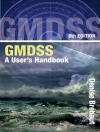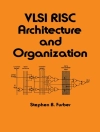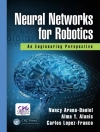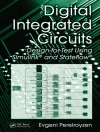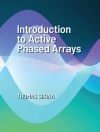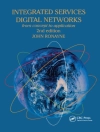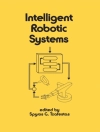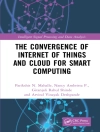A Unified Summary of the Models and Optimization Methods Used in
Computational Lithography
Optical lithography is one of the most challenging areas of
current integrated circuit manufacturing technology. The
semiconductor industry is relying more on resolution enhancement
techniques (RETs), since their implementation does not require
significant changes in fabrication infrastructure. Computational
Lithography is the first book to address the computational
optimization of RETs in optical lithography, providing an in-depth
discussion of optimal optical proximity correction (OPC), phase
shifting mask (PSM), and off-axis illumination (OAI) RET tools that
use model-based mathematical optimization approaches.
The book starts with an introduction to optical lithography
systems, electric magnetic field principles, and the fundamentals
of optimization from a mathematical point of view. It goes on to
describe in detail different types of optimization algorithms to
implement RETs. Most of the algorithms developed are based on the
application of the OPC, PSM, and OAI approaches and their
combinations. Algorithms for coherent illumination as well as
partially coherent illumination systems are described, and numerous
simulations are offered to illustrate the effectiveness of the
algorithms. In addition, mathematical derivations of all
optimization frameworks are presented.
The accompanying MATLAB® software files for all the RET
methods described in the book make it easy for readers to run and
investigate the codes in order to understand and apply the
optimization algorithms, as well as to design a set of optimal
lithography masks. The codes may also be used by readers for their
research and development activities in their academic or industrial
organizations. An accompanying MATLAB® software guide is also
included. An accompanying MATLAB® software guide is included,
and readers can download the software to use with the guide at
ftp://ftp.wiley.com/public/sci_tech_med/computational_lithography.
Tailored for both entry-level and experienced readers,
Computational Lithography is meant for faculty, graduate
students, and researchers, as well as scientists and engineers in
industrial organizations whose research or career field is
semiconductor IC fabrication, optical lithography, and RETs.
Computational lithography draws from the rich theory of inverse
problems, optics, optimization, and computational imaging; as such,
the book is also directed to researchers and practitioners in these
fields.
Содержание
Preface.
Acknowledgments.
Acronyms.
1 Introduction.
1.1 Optical Lithography.
1.2 Rayleigh’s Resolution.
1.3 Resist Processes and Characteristics.
1.4 Techniques in Computational Lithography.
1.5 Outline.
2 Optical Lithography Systems.
2.1 Partially Coherent Imaging Systems.
2.2 Approximation Models.
2.3 Summary.
3 Rule-Based Resolution Enhancement Techniques.
3.1 RET Types.
3.2 Rule-Based OPC.
3.3 Rule-Based PSM.
3.4 Rule-Based OAI.
3.5 Summary.
4 Fundamentals of Optimization.
4.1 Definition and Classification.
4.2 Unconstrained Optimization.
4.3 Summary.
5 Computational Lithography with Coherent Illumination.
5.1 Problem Formulation.
5.2 OPC Optimization.
5.3 Two-Phase PSM Optimization.
5.4 Generalized PSM Optimization.
5.5 Resist Modeling Effects.
5.6 Summary.
6 Regularization Framework.
6.1 Discretization Penalty.
6.2 Complexity Penalty.
6.3 Summary.
7 Computational Lithography with Partially Coherent Illumination.
7.1 OPC Optimization.
7.2 PSM Optimization.
7.3 Summary.
8 Other RET Optimization Techniques.
8.1 Double-Patterning Method.
8.2 Post-Processing Based on 2D DCT.
8.3 Photoresist Tone Reversing Method.
8.4 Summary.
9 Source and Mask Optimization.
9.1 Lithography Preliminaries.
9.2 Topological Constraint.
9.3 Source-Mask Optimization Algorithm.
9.4 Simulations.
9.5 Summary.
10 Coherent Thick-Mask Optimization.
10.1 Kirchhoff Boundary Conditions.
10.2 Boundary Layer Model.
10.3 Lithography Preliminaries.
10.4 OPC Optimization.
10.5 PSM Optimization.
10.6 Summary.
11 Conclusions and New Directions of Computational Lithography.
11.1 Conclusion.
11.2 New Directions of Computational Lithography.
Appendix A: Formula Derivation in Chapter 5.
Appendix B: Manhattan Geometry.
Appendix C: Formula Derivation in Chapter 6.
Appendix D: Formula Derivation in Chapter 7.
Appendix E: Formula Derivation in Chapter 8.
Appendix F: Formula Derivation in Chapter 9.
Appendix G: Formula Derivation in Chapter 10.
Appendix H: Software Guide.
References.
Index.
Об авторе
Dr. Xu Ma received a Ph D in electrical and computer
engineering from the University of Delaware. He is now with the
Electrical Engineering and Computer Science Department at the
University of California at Berkeley. Dr. Ma’s research interests
include computational imaging, signal processing, and computational
lithography.
Dr. Gonzalo R. Arce received a Ph D degree in electrical
engineering from Purdue University. He is the Charles Black Evans
Distinguished Professor of Electrical and Computer Engineering at
the University of Delaware and holds the Fulbright-Nokia
Distinguished Chair in Information and Communications Technologies.
Dr. Arce’s fields of interest include nonlinear and statistical
signal processing, digital printing, and computational imaging. He
is a Fellow of the IEEE for his contributions to the theory and
applications of nonlinear signal processing.


